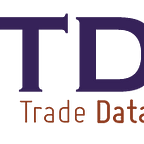Navigating the Seas of Global Trade Data Statistics: Insights and Perspectives
In today’s interconnected world, global trade plays a pivotal role in shaping economies, industries, and businesses worldwide. Understanding the trends, patterns, and dynamics of global trade is crucial for governments, policymakers, businesses, and investors alike. Fortunately, with the advent of advanced data collection and analysis techniques, accessing comprehensive global trade data statistics has become more feasible than ever before. In this blog post, we delve into the multifaceted aspects of global trade data statistics, exploring their significance, sources, challenges, and implications.
The Significance of Global Trade Data Statistics:
Global trade data statistics serve as the backbone of international commerce, providing invaluable insights into the movement of goods, services, and capital across borders. These statistics offer a comprehensive overview of trade flows, including imports, exports, trade balances, tariffs, and trade agreements. By analyzing such data, policymakers can formulate effective trade policies, businesses can identify emerging market trends, and investors can make informed decisions.
Sources of Global Trade Data Statistics:
Various organizations and institutions compile and disseminate global trade data statistics, catering to diverse stakeholders’ needs. Some of the prominent sources include:
1. International Monetary Fund (IMF): The IMF collects and publishes comprehensive trade data statistics through its Direction of Trade Statistics (DOTS) database. DOTS offers detailed information on bilateral trade flows between countries, enabling analysts to assess the geographical distribution of trade.
2. World Trade Organization (WTO): As the global body overseeing international trade rules, the WTO provides valuable trade data statistics through its Trade Statistics database. This database offers insights into global trade trends, tariff profiles, and trade agreements, facilitating comparative analysis across countries and regions.
3. United Nations Comtrade Database: Managed by the United Nations Statistics Division, the Comtrade database is a repository of detailed bilateral trade data reported by member countries. It covers a wide range of commodities and services, allowing users to explore trade dynamics at a granular level.
Challenges in Interpreting Global Trade Data Statistics:
While global trade data statistics offer invaluable insights, they also present certain challenges in interpretation and analysis. Some of the key challenges include:
1. Data Accuracy and Reliability: Ensuring the accuracy and reliability of trade data remains a persistent challenge, as discrepancies and inconsistencies may arise due to differences in reporting practices among countries. Moreover, informal or illegal trade activities may go unreported, leading to gaps in the data.
2. Classification and Harmonization: Classifying goods and services according to international standards poses challenges, as different countries may use varying classification systems. Harmonizing trade data across diverse classifications is essential for meaningful cross-country comparisons but requires concerted efforts and resources.
3. Data Timeliness and Availability: Delays in data reporting and availability can hinder real-time analysis and decision-making, particularly in fast-paced global markets. Improving data timeliness and accessibility through automation and digitalization is crucial for enhancing the usefulness of trade statistics.
Implications of Global Trade Data Statistics:
The insights derived from global trade data statistics have far-reaching implications across various domains:
1. Economic Policy Formulation: Policymakers rely on trade data statistics to assess the impact of trade policies, tariffs, and trade agreements on domestic industries and economies. Evidence-based policy formulation is essential for promoting trade liberalization, fostering economic growth, and addressing trade imbalances.
2. Supply Chain Management: Businesses leverage trade data statistics to optimize their supply chains, identify potential suppliers and markets, and mitigate risks associated with global trade disruptions. Real-time access to trade data enables agile decision-making and proactive risk management strategies.
3. Investment Decisions: Investors use trade data statistics to evaluate market opportunities, assess geopolitical risks, and allocate capital effectively across countries and industries. Understanding trade dynamics is crucial for maximizing investment returns and diversifying portfolios in an increasingly interconnected global economy.
Conclusion:
In conclusion, global trade data statistics serve as a cornerstone of modern international commerce, providing actionable insights for governments, businesses, and investors. Despite challenges in data accuracy and interpretation, the availability of comprehensive trade data empowers stakeholders to navigate the complexities of global trade effectively. By harnessing the power of data analytics and technology, we can unlock new opportunities and address emerging challenges in the dynamic world of global trade.
